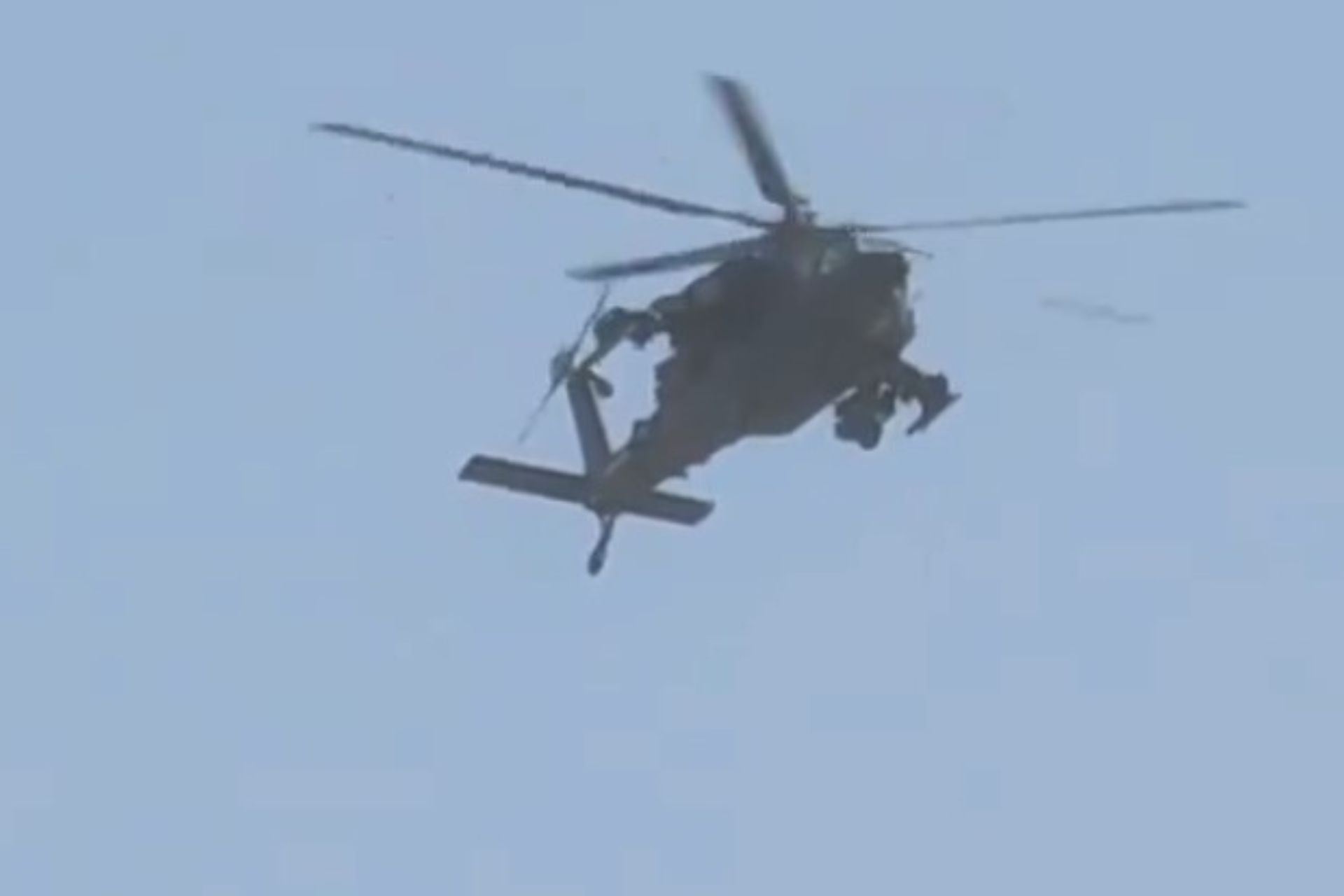Breaking News
New Images of China's Z-21 Reveal Similarities with US AH-64 Apache Design.
A new video posted on the social network WEIBO by @Captain小潇 reveals the Z-21, the latest heavy attack helicopter undergoing flight tests in China. Observed this week, the Z-21 appears to be an evolution of the Z-20, itself inspired by the American Black Hawk. This development marks a significant step for the People's Liberation Army (PLA) in enhancing its aerial capabilities.
Follow Army Recognition on Google News at this link

Although derived from the Z-20, the Z-21 is distinguished by an attack-optimized configuration, with a slimmer fuselage adapted to a tandem two-seat arrangement typical of modern attack helicopters (Picture source: Weibo Channel @Captain小潇)
The Z-21 exhibits notable similarities with the American AH-64 Apache attack helicopter. The aircraft features pronounced lateral fairings extending from the nose to the tail, reminiscent of those on the Apache. Although derived from the Z-20, the Z-21 is distinguished by an attack-optimized configuration, with a slimmer fuselage adapted to a tandem two-seat arrangement typical of modern attack helicopters.
Design elements from the Z-20 are visible, particularly in the rear section with an unswept horizontal stabilizer. The stub wings, equipped with pylons, suggest an increased capacity for carrying armaments. The current absence of a chin-mounted gun might indicate an early development stage, although it is anticipated as a future standard feature for this type of helicopter.
Notable features of the Z-21 include improvements in self-defense systems and a design aimed at reducing its infrared signature, notably through the upward orientation of the engine exhausts. These aspects are intended to enhance its battlefield survivability.
The Z-21 shares several similarities with the AH-64, reflecting a convergence in attack and utility helicopter design concepts. Both helicopters have robust powerplants, though the Z-21 is distinguished by the upward orientation of its exhausts to reduce its thermal signature against infrared-guided missiles.
The cockpit of the Z-21, with its combat-optimized configuration, resembles the advanced pilot station of the AH-64, designed to maximize pilot visibility and operational efficiency. Both aircraft feature similar prominent fairings and have strategically placed guns to provide significant firepower. The stub wings beneath the engine air intakes, designed to carry various armaments, underscore the versatility and enhanced combat capabilities of these helicopters. These similarities demonstrate ongoing adaptation and innovation in military helicopter development while retaining proven elements that strengthen operational effectiveness.
Military experts view the Z-21 as a key factor in potential conflicts involving Taiwan or India, highlighting its ability to operate at high altitudes. This capability is crucial for operations in mountainous terrains and could enhance China's offensive capacities in these regions.
The development of the Z-21 is the result of collaboration among several entities in China's defense industry, including Harbin and Changhe, as well as the 602nd Research Institute. These partnerships reflect China's integrated approach to developing its military capabilities.
The Z-21 is seen as a complement or even a potential replacement for existing attack helicopter models in China's arsenal, such as the Z-10, with service entry expected in the next two to three years. Its introduction underscores China's ongoing efforts to modernize and expand its armed forces, particularly amid increasing regional tensions.
The release of this video offers a rare glimpse into China's heavy attack helicopter program. As the country continues to invest in modernizing its military, the Z-21 could play a significant role in future PLA operations.


























